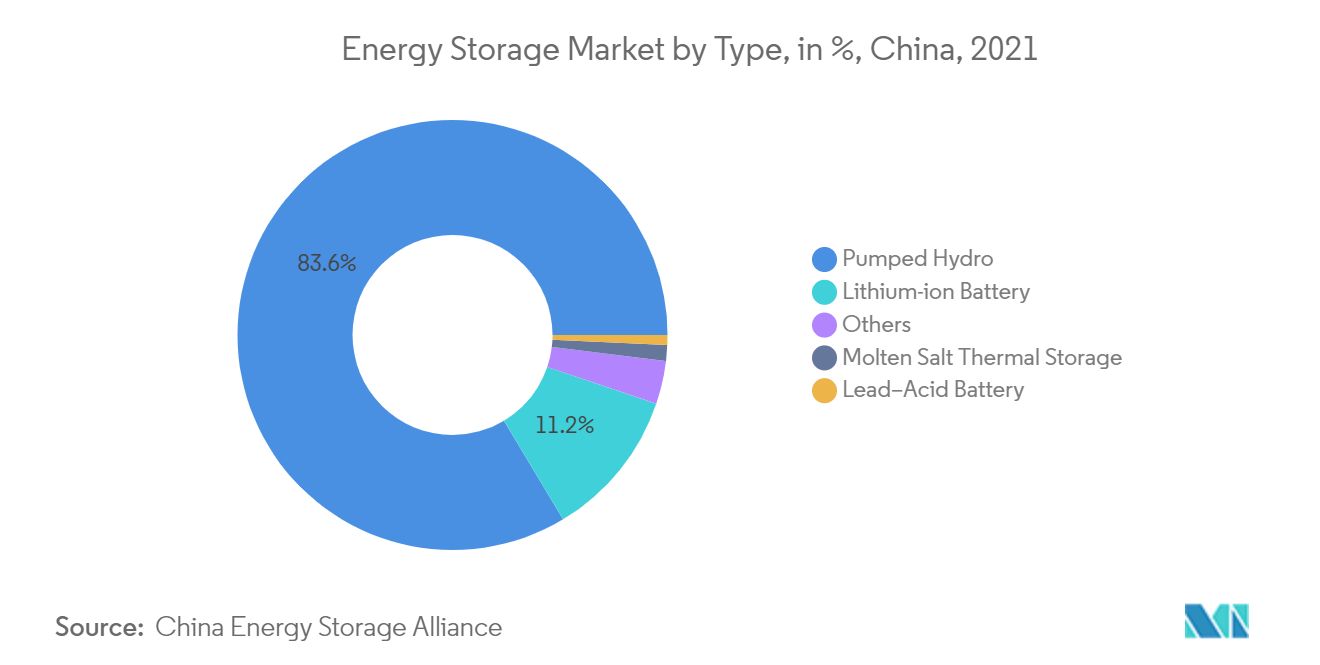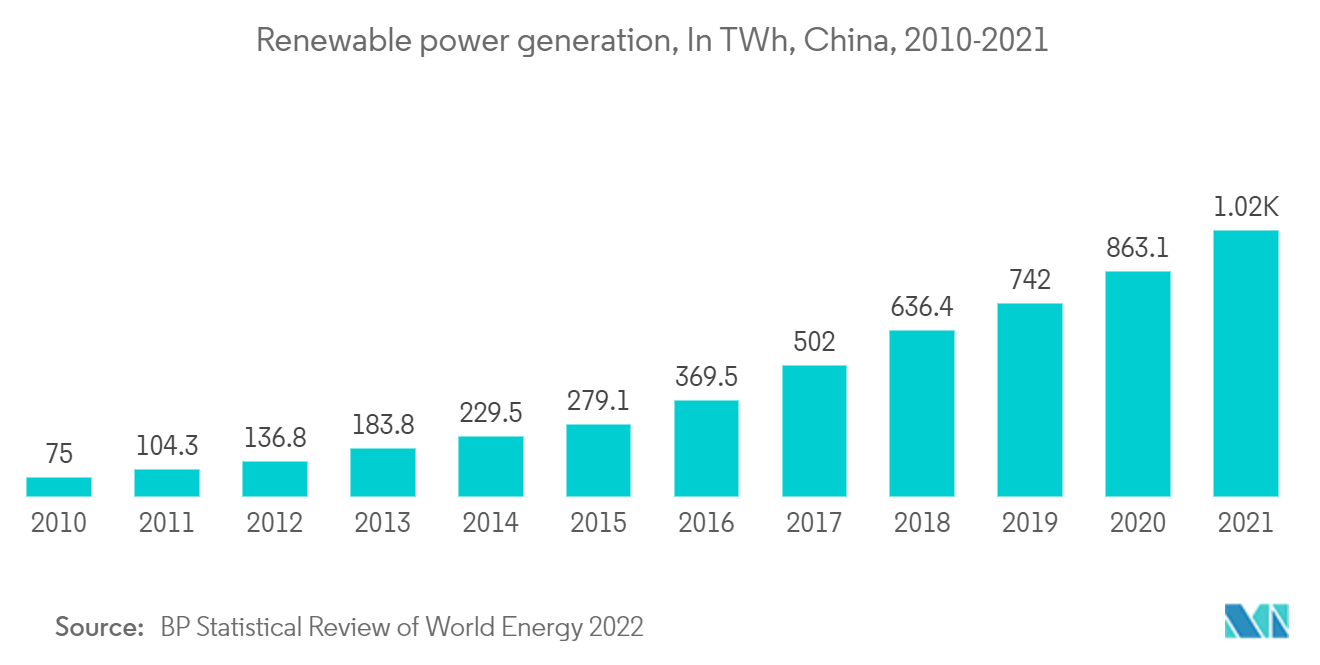Market Trends of China Energy Storage Industry
This section covers the major market trends shaping the China Energy Storage Market according to our research experts:
Electrochemical Segment is Expected to Dominate the Market
- In 2021, The energy storage capacity in China was 46.1 GW; the pumped hydro segment is dominating the energy storage market in China with a total installed capacity of 39.8 GW, which is around 83% of total energy storage capacity. Furthermore, the second-largest energy storage segment is electrochemical storage, with an installed capacity of 5.7 GW, approximately 12 % of total energy storage capacity and remaining 1.2% of energy storage is from Molten Salt Thermal Storage technology.
- China is one of the leading countries in the world in terms of battery production; for instance, in 2021, The total battery production capacity in China was around 558 GWh. In 2021, the global battery production capacity was around 600 GWh.
- Furthermore, Chinese battery manufacturers have announced plans to build over 3,000 GWh capacity by 2030. The battery manufacturing companies will start an additional 200 battery manufacturing plants by 2030.
- In 2021, the scale of new electrochemical energy storage projects had shown significant growth in China, reaching 3.2 GW. Furthermore, the government is also planning to drastically increase the electrochemical energy storage capacity by 2030.
- According to the State Grid Corporation of China, China is targeting electrochemical energy storage installed capacity of 30GW by 2025, and it will increase to 100GW in 2030.
- Due to all these factors, the electrochemical energy storage segment is expected to lead the market in the forecast period.

Increased Investment in Renewable Energy Project is Key Driving Factor
- China has been one of the leading investors in renewable energy projects over this decade. In 2021 China invested more than USD 266 billion in renewable energy projects, the U.S. second with USD 114 billion, and Germany third with USD 47 billion.
- The renewable power generation in China was around 75 TWh in 2010; it increased to 1152.5 TWh in 2021. Furthermore, according to bp's Statistical Review of World Energy - 2022, In China, the renewable energy sector witnessed significant growth rates in 2021; for instance, solar had a growth of more than 25.58%, the wind had more than 40.92%, and Hydro grew by 25.64%.
- To promote renewable energy projects, the government of China is heavily investing in renewable energy projects in-country. For instance, in March 2022, the government announced a plan to build 450 GW of renewable energy projects in the Gobi Desert and other desert locations. The projects are part of the country's strategy to increase its total wind and solar capacity by 1,200 GW.
- In September 2020, President Xi Jinping announced a roadmap that China aims to achieve carbon neutrality before 2060. This roadmap provides opportunities for clean energy projects focusing on the country's long-term needs.
- Furthermore, many private companies are also actively investing in renewable energy projects in China; for instance, in 2021, VRB Energy announced an agreement for China's largest solar battery for a 100 MW solar photovoltaic and 100MW vanadium flow battery integrated power station project in Xiangyang, Hubei Province. The project is expected to commission in the fourth quarter of 2022.
- This rise in investment in renewable energy projects would lead to higher demand for energy storage systems. Thus the energy storage market in China is expected to grow at a high growth rate during the forecast period.


